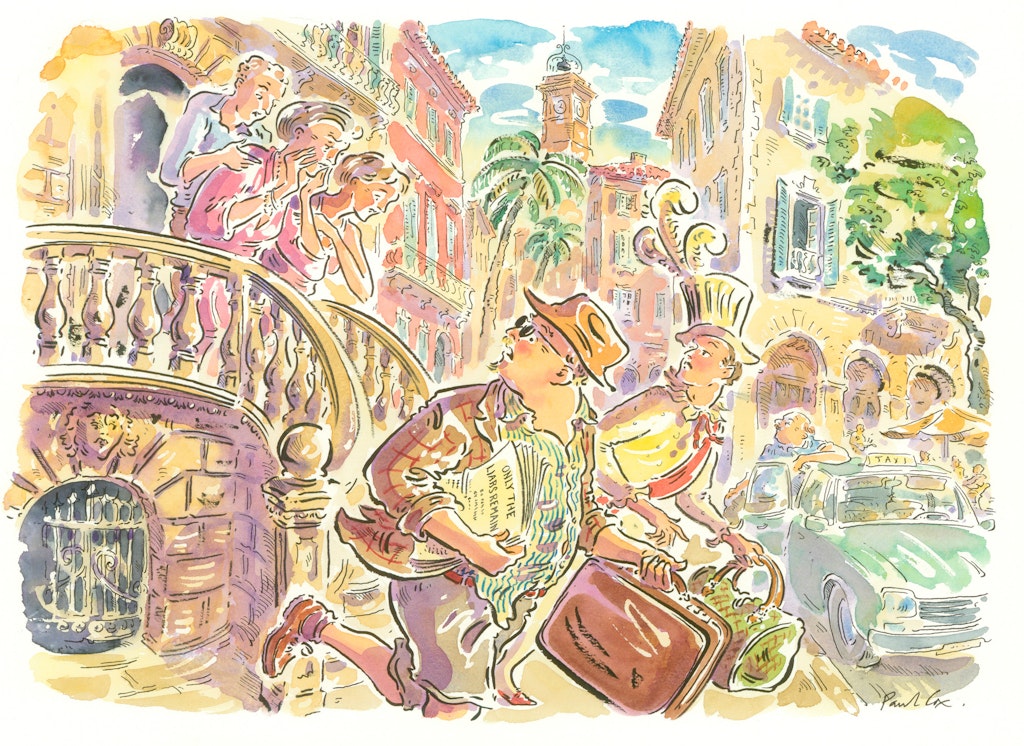Singles club
There’s a strange delight in the commercially unviable single chair
This article is taken from the March 2022 issue of The Critic. To get the full magazine why not subscribe? Right now we’re offering five issue for just £10.
Antique dealers are inexorably drawn to the single chair even although they rarely sell, particularly when a bit broken.
Now, a single chair is not inherently valueless. For example, Eileen Gray’s “Dragons” armchair sold for a sliver below €22 million back in 2009 and there are many examples of single chairs selling for tens of thousands.
But don’t be beguiled. The vast majority are unsellable box and every dealer’s store will be peopled by ostensibly fascinating items nobody but another dealer would give house room to.
The appeal (and simultaneously the trap) is twofold. Firstly, there is the canard of knowing exactly what something is. The other day I bought a single Windsor armchair in yew wood and elm that had the distinctive under-arm baluster splat and crinoline stretcher of the famous Thames Valley Prior Family of Uxbridge. But I failed to consider the commercial reality of the chair; I knew exactly what it was, and flattered myself into buying it.
A little knowledge is a dangerous thing, and a lot of knowledge even more so. My first boss encouraged me to buy with my stomach and work out what the purchase was later. If you buy with your intellect the tendency is to buy the familiar or the classic. These days that is the kiss of death.
I have eight single chairs at the moment including my recent indulgence
The second, even more uncommercial, approach is to buy something because it is delicious in a particular way and hopelessly damaged in another. Broken legs, damaged splats, wobbly structure, destroyed upholstery or missing elements should all be red flags. But these faults can be a draw if the timber is rare, or an aspect of carving is particularly fluid or if the chair stands in a well-mannered way.
Chairs are lovely things and almost everyone has a favourite. We describe them in human ways: they have legs, backs, knees, arms, shoulders and even sometimes ears. They are constant companions — the friend who never criticises and bears all that we throw at them — until they collapse.
Country chairs are usually Windsor chairs. The maker begins with the seat and the back and the legs all joint into it, usually literally with holes drilled into the seat and everything glued in.
A town chair is made more like a box which has no sides, in other words as a jointed frame where the legs and joining rails support the structure. But chairs’ essential simplicity belies the infinite variety the form offers. It is a bit like a sonnet, 14 lines and a very formalised versification, but within that structure a cornucopia of expressive opportunity.
I am not worse and certainly no better than most: I have eight single chairs at the moment including my recent indulgence. Nothing however compares to the stock of the Rossi family dealership in Turin. We used to go there once a year to see if we could buy something: but most of what you admired was not for sale — this time. The family comprised a large, suited, immobile old man who sat silently in a chair and his effervescent, chattering, bird-like, equally elderly sister.
Looking around involved entering a large apartment block and going from floor to floor viewing seemingly unrelated apartments, each with a random name on the door. Each was huge and high-ceilinged; room after room were crammed full of stock, almost exclusively marvellous things.
But we never went to the top floor. Eventually I squirrelled up my courage and asked what was up there, and the sister replied that though there was nothing for me, she would show me … if I wanted.
Of course I did. Entering, a wave of dust blew into my face and I imagined myself as the first into Tutankhamen’s tomb. I walked slowly through eight or ten rooms of single chairs, all piled on top of each other, higgledy-piggledy. It was an astonishing sight, more like an artwork than a storeroom. I guess I saw more than a thousand chairs. Whatever I do, I will never be that bad.
Enjoying The Critic online? It's even better in print
Try five issues of Britain’s most civilised magazine for £10
Subscribe














